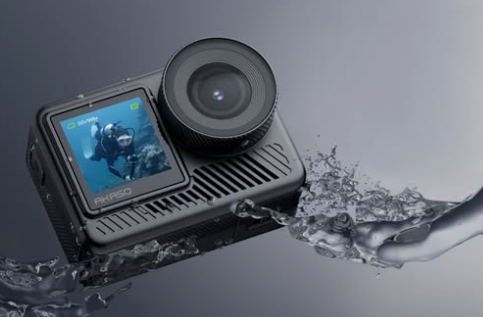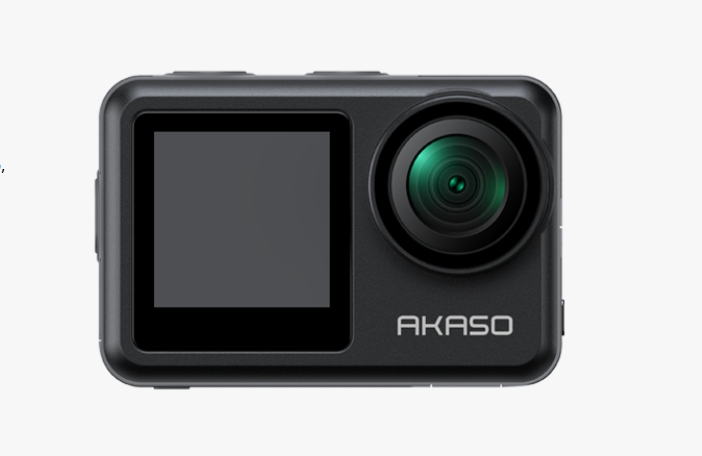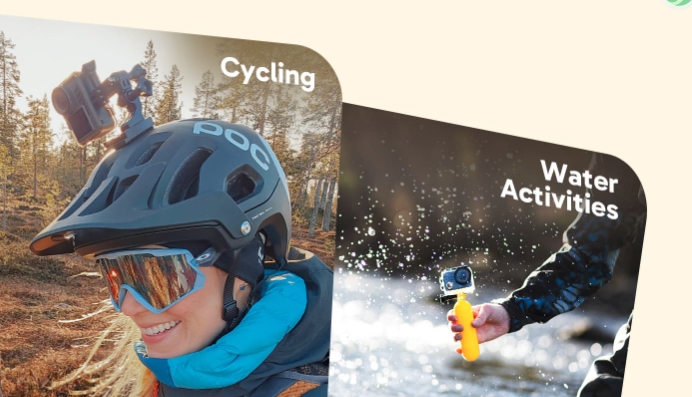You may have seen "long exposure" on your camera, on your phone's camera apps, different photography tips, but don't really know what long exposure is exactly.
In this post, we will explore the magic of long exposure. You will learn what long exposure means, when, and how to use long exposure on your AKASO action camera and other cameras. So, let's begin by sharing a few words on a long exposure.
What is Long Exposure?
Shutter speed is one of the factors in the exposure equation, the other two being aperture and ISO. Shutter speed determines the time the shutter remains open. As a result, your shutter speed also decides how much light your lens picks up.
Slow shutter speeds mean the shutter stays open for longer. Shooting with a slow shutter speed is called long exposure photography. The technique blurs the moving elements of an image while the static elements stay focused. Interestingly, there is no defined limit as to when your shutter speed becomes too slow to qualify for long exposure photography.
Shooting with long exposure adds a sense of motion to your pictures. You must have seen those star trails and light trails- they are all shot with a long exposure.
When to Use Long Exposure?
Fast shutter speeds freeze your images. Imagine a baseball player captured in the air while they jumped to catch the ball. Long exposure does exactly the opposite!
The moving elements in your frame get a slight blur when shot in long exposure. You may also increase the burring if you choose to. In contrast with the static elements in your image, the blurry effects create a feeling of motion.

In the picture above, the left one is shot in long exposure. You can see how the water appears blurry and seems like flowing.
Now, look at the picture on the right. You can see how the water freezes in the frame as it's shot with a fast shutter speed.
The time your shutter stays open will determine the amount of blur on your image. It will also allow more light, even during night shots and low-light conditions.
Now, let's explore a few opportunities that you can use long exposure on your camera to create amazing images.
Star Trails
Shooting the night stars in motion can be quite rewarding. You will need a tripod for this one to limit the noises. You can try exposures of 30-seconds to a few hours. Of course, you will need good photo editing software to refine your images afterward.

Light Trails
Shooting with a long exposure can help you create amazing light trails. Think of all the cityscapes with blurred cars and trails of lights. The same technique also lets you click light drawings. Get a tripod and set your camera to a slow shutter speed to begin.
Fireworks in the Sky
Capturing fireworks in their full glory will need a long exposure, a tripod, and probably a remote release. Use the 'bulb' mode where you can keep your shutter open as long as you press the shutter. This will help you capture the moments from when the firework bursts to when it's done.
You can also try an ISO of 100, a shutter speed of 1/2 second, and an aperture of f/11.
Water Movements
Water movements can take magical forms with long exposure. You can smooth out streams and waterfalls, conveying a sense of movement. It also gives your water a smooth effect and creates a beautiful visual experience.
You can use slow shutter speeds of 5-seconds to 30 -seconds. Experiment as much as you need to get the shot you want.

Fantastic Revolving Objects
Spinning objects get a complete makeover when you shoot them using long exposure. A Ferris wheel in motion shot using long exposure will create beautiful rings of lights. You can try out exposures between 1 and 30-seconds to get your deserving shot.
However, you have to consider the speed of the ride and the available light.
Long Exposure in AKASO Action Camera
AKASO action cameras offer Long Exposure mode for users to create images with the long exposure effect easily. Therefore, it is quite easy to start long exposure photography with AKASO Brave 7 LE, V50 Pro, EK7000, or any other models.
Step 1 Open the AKASO camera.
Step 2 Swipe the screen to switch to Photo Mode.
Step 3 Tap Settings on the Photo Mode.
Step 4 Select Long Exposure and choose the proper shutter speed from 6 options ( 1 Sec/2 Sec/5 Sec/8 Sec/30 Sec/60 Sec).
Tip: The larger value indicates the slower shutter speed and thus the burier the moving objects appear.
How to Use Long Exposure Manually with Any Camera
If your camera doesn't have a long exposure mode, you can shoot long exposure pictures with the following settings.
Lower ISO and Aperture
Shutter speed, as we said, is a part of the exposure triangle. So, you need to compensate for the other two factors for keeping your shutter open longer. Ideally, your ISO and aperture should be at the lowest possible values.
Start with a Balanced Exposure
Try using a balanced exposure to get a shot. Make sure you have a good dynamic range, and the histogram is balanced too. Try starting with an ISO of 100. Then turn on auto ISO once your camera adjusts and start lowering your shutter speed. Alternatively, you can put your ISO and aperture to the lowest values to force your shutter to stay open longer.
Use a Filter
Shooting in long exposure lets in more light to your images. As a result, many of your shots can turn out overexposed. The trick is to use a filter that cuts the light hitting the lens. You can use neutral density filters for daytime shots and polarizing filters for landscapes.
Use a Tripod and Remote Release
Shooting in long exposures is not possible using your hands. You can't expect to have iron steady hands that let you capture the perfect start trail. So, investing in a proper tripod is necessary.
Some long exposure shots may also need a remote release.
Take Multiple Shots
Take as many shots as you need to create the effect you want. It will also give you an idea of how shutter speeds control the amount of blur in images.
Final Thoughts
Using long exposures can surely be a game-changer for photographers. Experiment a lot and hone your skills to become a pro of slow shutter speeds. Arrange a tripod and a remote release to reduce shakes and noises from your pictures. Plus, use a quality editing tool to refine your pictures. Don't forget to share your pictures for all of us to see!

















